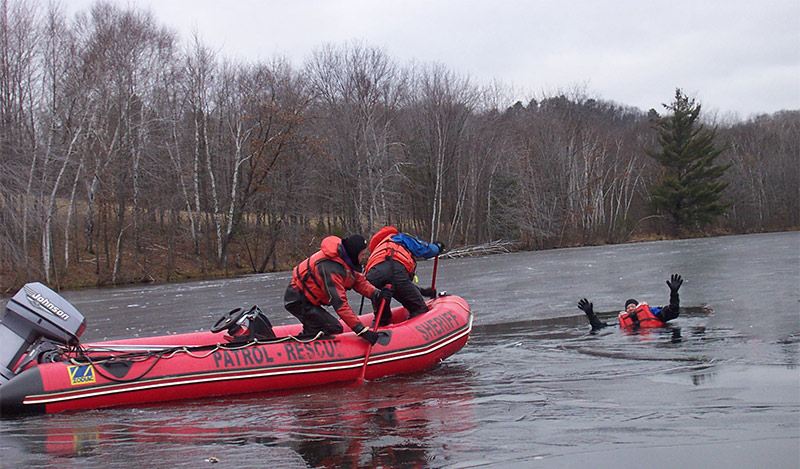Don’t Forget Your Life Vests and PFDs
by Brianne Grant:

photo by: Keith Cormican
It has become common for public safety divers and dive team members to overlook the importance of wearing a personal flotation device (PFD) during training or missions in, near, or on water. Somewhere in the evolution of personal flotation devices, their necessity was lost among the burden to wear them. PFDs can be cumbersome but they are one more piece of personal protective equipment public safety team members should be applying before responding to or entering a scene.
Teams will often view PFDs as a necessary evil because they are just one more thing that must be brought along and worn. In the quick commotion of an actual operation, PFDs can easily be forgotten. This could result in a potential negative outcome such as accidental submersion. When responding to missions, or operating in monthly training, required PFD use is typically outlined in a team’s standard operating procedures or guidelines (SOP/SOG) however referencing these guidelines is often neglected.
PFDs are crucial to a team’s safety in rescue or recovery scenarios that involve swift water or ice, for rescuers, tenders as well as other team members on site. A PFD will help keep a submerged team member’s head afloat in the event they are accidentally knocked off balance, tugged in, or forced to enter the water unexpectedly.
Public safety PFDs are typically a neon color (usually orange) with reflective tape lining the front, sides, and back for easy identification or location. This unique identifier is another crucial safety feature for team members or those responding to the scene, especially for operations conducted at night. The neon color of the PFD makes it easy for victims to identify who the rescuer is, as well as give tenders and team members a distinct visual reference to track during the mission.
Not only do PFDs help with in-water incidents for team members but also with on-land incidents. The vest that members reluctantly put on over their uniforms, adds an additional protective layer. PFDs can protect members against unfavorable weather, adding an extra layer of warmth and holding in body heat. They also add an additional layer of cushion should a member be impacted by rescue equipment or to the ground by accident.
PFDs are not a thing of the past, and can help no one when tucked into truck storage compartments, strapped to a boat, or left in an inaccessible location. PFDs should be the first piece of personal protective equipment team members use before accessing, entering, or responding to any potential water mission or training. Yes they are cumbersome but try and stay afloat with knee high waders on, I bet you’ll no longer think they’re a pain!


Ответить
Хотите присоединиться к обсуждению?Не стесняйтесь вносить свой вклад!